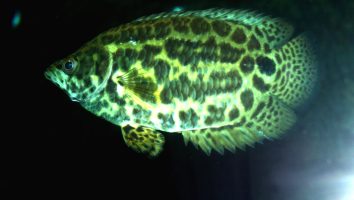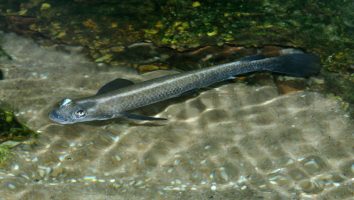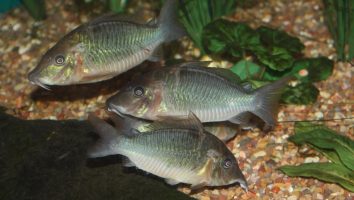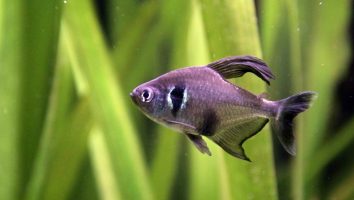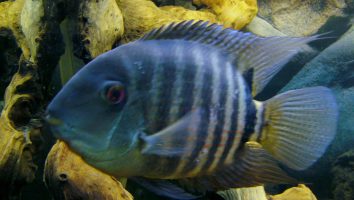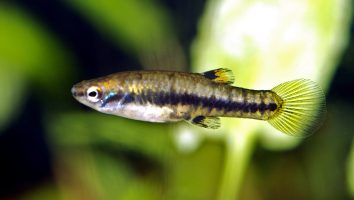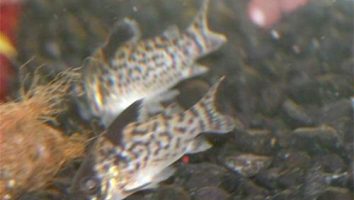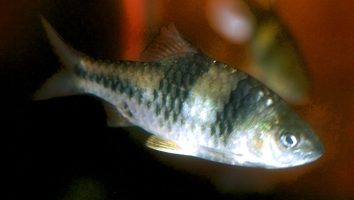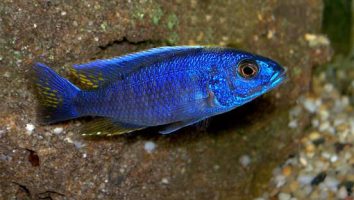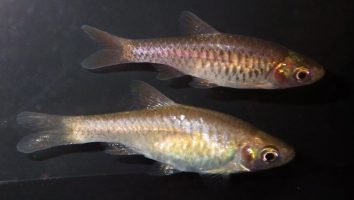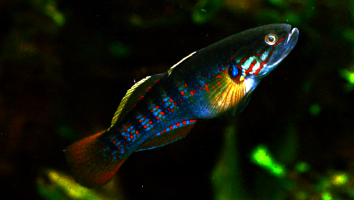The Texas cichlid (Herichthys cyanoguttatus) is a freshwater fish that is popular in the aquarium trade.
This fish is native to the waters of Central America, but has been introduced to other parts of the world.
The Texas cichlid is a hardy fish that can adapt to a wide range of water conditions. This fish is also a good choice for beginners, as it is relatively easy to care for.
In this guide, we will go over all the basic information you need to know about Texas cichlid care. This includes diet, tank size, tank mates, and more.
Table of contents
Species overview
The Texas cichlid (Herichthys cyanoguttatus) is a freshwater fish that’s native to the southern United States, specifically Texas and Louisiana.
They prefer slow-moving waters with a lot of vegetation, such as lakes, ponds, and rivers. Texas cichlids are also known to inhabit brackish waters on occasion, although this is not their preferred habitat.
Texas cichlids are relatively large fish, with adults reaching up to 18 inches in length. They are also quite long-lived, with a lifespan of 10-15 years not being uncommon.
Due to their size and aggression, Texas cichlids are not recommended for beginner aquarium hobbyists. They are best suited for experienced fish keepers who have the patience to deal with their sometimes belligerent behavior.
Appearance
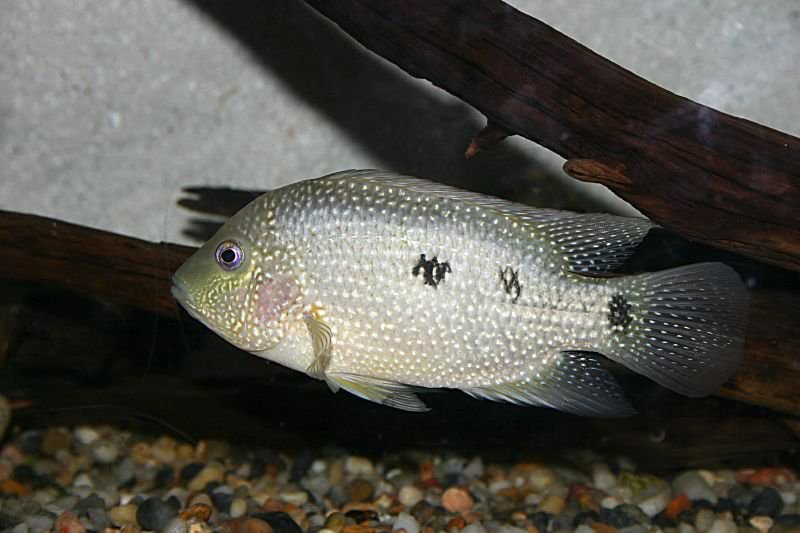
The Texas cichlid is one of the most popular freshwater fish in the aquarium trade. And it’s easy to see why. These fish are absolutely gorgeous!
The base color of the Texas cichlid is a milky white or ivory. But, their bodies are absolutely covered in black spots. These spots can be big or small and they’re usually clustered around the middle of the fish.
The fins on a Texas cichlid are also quite striking. They have a large and tall dorsal fin that starts almost at the base of their tail. This fin has a beautiful black and white striped pattern.
The caudal fin is also quite large and it has the same black and white striped pattern. The anal and pectoral fins are much smaller by comparison and they’re a solid black color.
The face of a Texas cichlid is also quite striking. They have large eyes that are set far apart on their head. Their mouths are large and open, revealing quite a few sharp teeth.
Lifespan
Texas cichlids have an average lifespan of 5 to 10 years. However, some have been known to live up to 15 years in captivity.
As with most fish, the key to a long lifespan is good water quality and a stress-free environment. Cichlids are particularly sensitive to changes in their environment, so it’s important to keep a close eye on things like temperature and pH.
Size
The Texas cichlid is a large fish, with adults reaching up to 20 inches in length. As a result, they need a large tank to accommodate their size and swimming space needs. A single Texas cichlid needs at least a 55-gallon tank all to itself.
Tank
Tank Size
The recommended minimum tank size for Texas cichlids is 55 gallons. If you’re looking for a freshwater fish that can fit in an average-sized tank, this is not the fish for you.
If you want to keep two Texas cichlids in the same tank you’ll want to add at least another 55 gallons to that minimum number if you want them to thrive.
Another reason why you need to provide enough space is for the sake of enrichment and comfort. These fish like to roam and will often run gentle but steady laps around your tank. Giving them a little bit of extra space can go a long way in making sure they can comfortably turn around in the tank.
Water Parameters
The Texas cichlid (Herichthys cyanoguttatus) is a freshwater fish that is native to the waters of the southern United States.
In the wild, Texas cichlids prefer water with a neutral pH, moderate hardness, and a temperature range of 72-78 degrees Fahrenheit.
When keeping Texas cichlids in captivity, it is important to maintain similar water conditions.
- Water temperature: 72-78 degrees Fahrenheit
- pH levels: 7.0-8.0
- Water hardness: 10-20 dGH
- Alkalinity Levels: 4-8 dKH
What To Put In Their Tank
The first thing you need to take into consideration is the fact that Texas cichlids are big fish. They can easily grow to be a foot long, and some specimens even reach two feet!
This is important because it means you need to provide them with a tank that’s big enough to accommodate their size. A good rule of thumb is to have at least 50 gallons of water for each Texas cichlid in your tank.
The next thing you need to think about is the substrate. These fish love to dig, and they’re not very delicate about it. Anything sharp or jagged can easily injure them.
A soft, sandy substrate is the best way to go. This will allow them to dig to their heart’s content without having to worry about any cuts or scrapes.
As for plants, you can include them if you want but be prepared for some destruction. Texas cichlids are known to uproot plants when they’re feeling frisky.
If you do want to include plants, we recommend going with something that’s tough and can withstand a little abuse. Hornwort, Java moss, and water wisteria are all good choices.
Finally, you’ll need to provide some hiding places for your fish. Texas cichlids are known to be a little on the aggressive side, and they’ll need somewhere to retreat to when the mood strikes them.
Caves, driftwood, and rocks all make great hiding places. Just make sure whatever you use is big enough that your fish can fit inside (and that it won’t topple over and crush them).
Common Diseases
Texas cichlids are actually quite hardy fish. They’re not immune to disease, but they’re definitely more resilient than most other freshwater species.
The most common disease that affects this species is ich. This is a parasitic infection that will present itself as white spots on the body, fins, and gills of your fish.
If left untreated, ich can be quite serious (even deadly). However, it’s relatively easy to treat if you catch it early.
The best way to prevent your Texas cichlid from getting sick is to maintain a clean and stable tank. These fish are pretty tolerant of a wide range of water conditions, but it’s always best to err on the side of caution.
By providing them with the best possible habitat, you’ll decrease the chance of them getting sick and increase the chance of them living a long and healthy life.
Behavior & Temperament
The Texas cichlid is a semi-aggressive fish that is best kept with other semi-aggressive fish. It is not recommended to keep this fish with smaller fish or fish that are not semi-aggressive because the Texas cichlid may see them as food.
The Texas cichlid is a relatively peaceful fish when it is kept with other semi-aggressive fish. However, it is important to provide this fish with plenty of hiding places because it may become stressed if it does not have somewhere to hide.
The Texas cichlid is a very active fish and is always on the move. It is constantly exploring its environment and is very curious. This fish is also a very good jumper, so it is important to have a tight-fitting lid on your aquarium.
Tank Mates
The Texas cichlid is a bit of a tricky fish to keep. They’re native to waters with high mineral content and a neutral pH. This means that they’re not as adaptable as some other freshwater species.
The good news is that there are still plenty of Texas cichlid tank mates to choose from. The best tank mates for Texas cichlids are other cichlids!
Cichlids are a diverse group of fish with a wide range of personality types. Some are aggressive, while others are more laid back.
The best way to find out if a particular cichlid is compatible with your Texas cichlid is to do your research. Here are some cichlid species that tend to work well:
- Green Terror Cichlid
- Oscar Cichlid
- Firemouth Cichlid
- Jack Dempsey Cichlid
- Convict Cichlid
- Blood Parrot Cichlid
Breeding
Texas cichlids are a popular choice for many freshwater aquariums. They’re hardy, beautiful, and relatively easy to care for. But did you know that they’re also easy to breed?
The first step is to set up a breeding tank. It should be at least 30 gallons in size and have a sandy bottom. Then, add some hiding places using rocks, caves, and plants.
When it comes to water conditions, aim for a pH of 7.5 and a temperature of 78 degrees Fahrenheit.
Now it’s time to add your fish. You’ll want one male and two females for every 10 gallons of water. Texas cichlids can be aggressive, so it’s best to err on the side of caution.
The male will start to build a nest out of rocks, plants, and other materials. Once he’s finished, he’ll start to court the females. If everything goes according to plan, the female will lay her eggs in the nest.
The male will then fertilize them and start to guard them. He’ll do this for about three weeks until the fry are ready to fend for themselves.
At this point, you can remove the adults and start feeding the fry baby brine shrimp. They’ll also eat other live foods, such as daphnia and bloodworms.
Conclusion
The Texas cichlid is a great fish for beginner and experienced aquarium enthusiasts alike. They’re relatively easy to care for and have a wide range of personality, which makes them enjoyable to watch.
While they can be aggressive, they can also be very peaceful, making them a versatile fish for a community tank.
Overall, we think the Texas cichlid is a great fish and would recommend them to anyone looking for a new addition to their aquarium!

